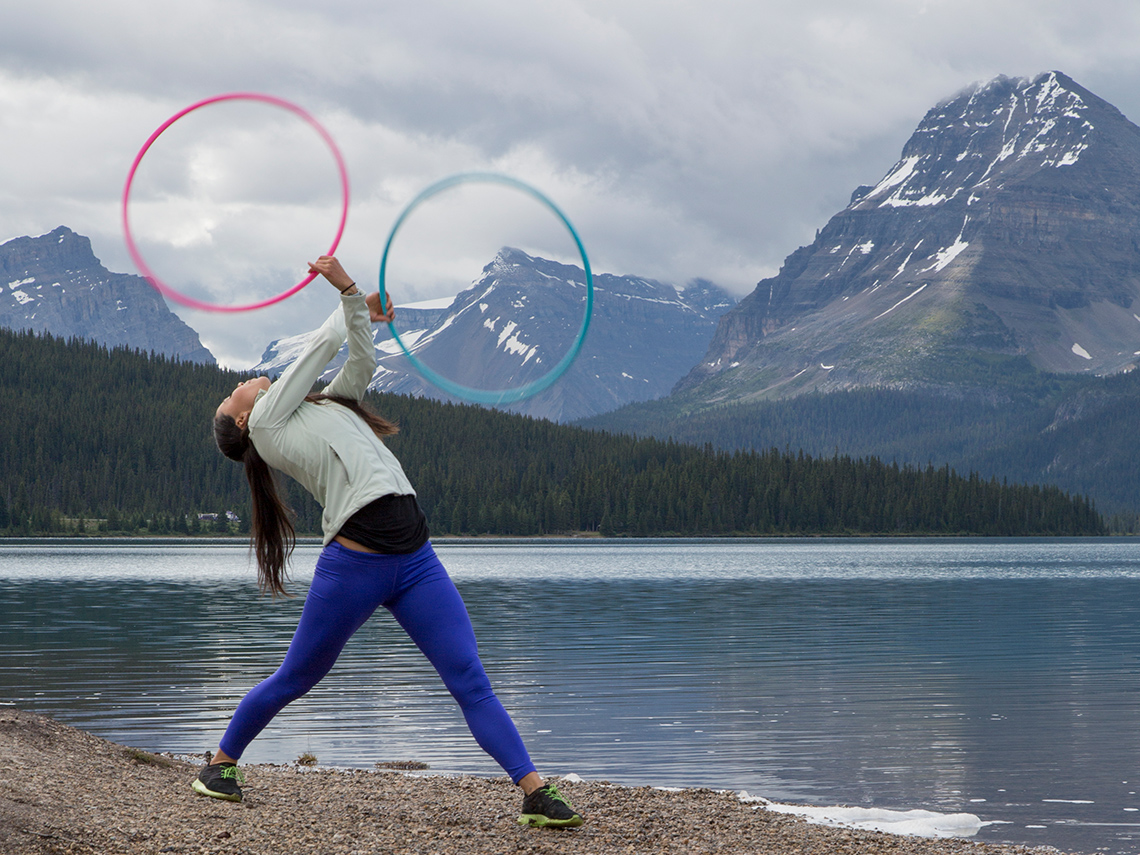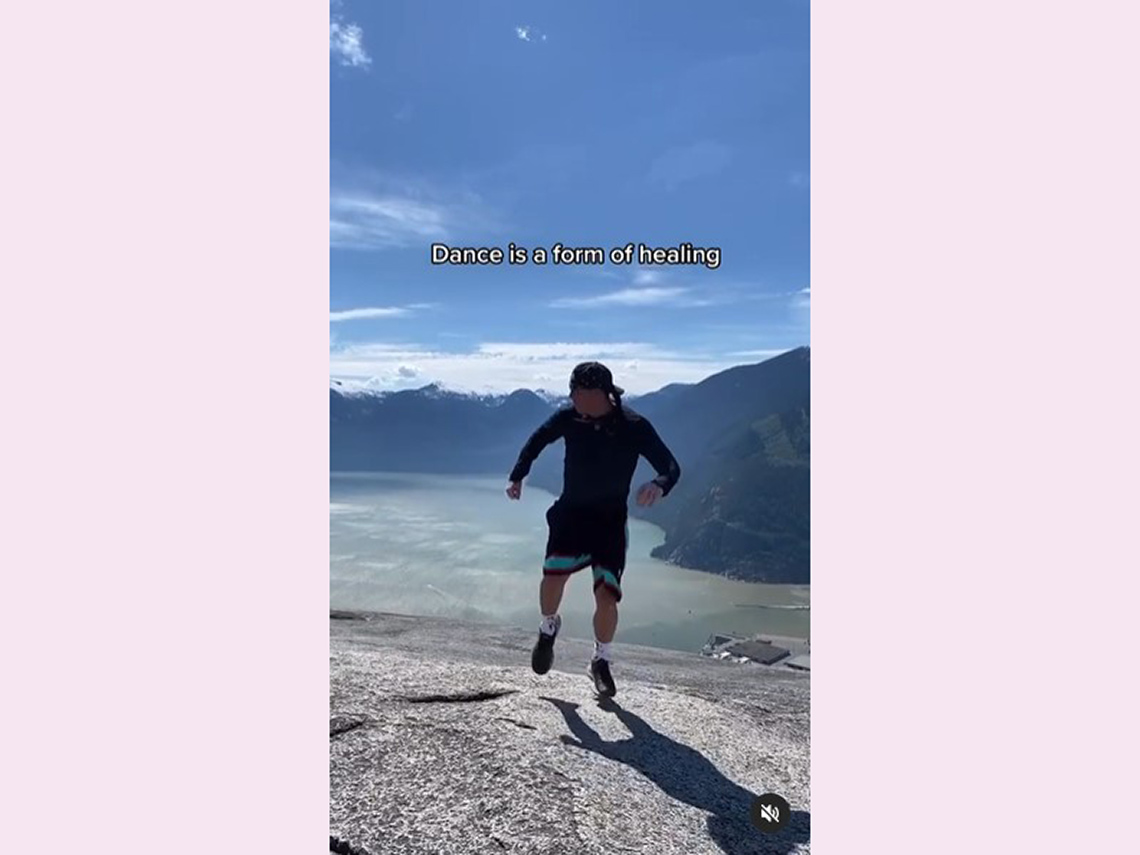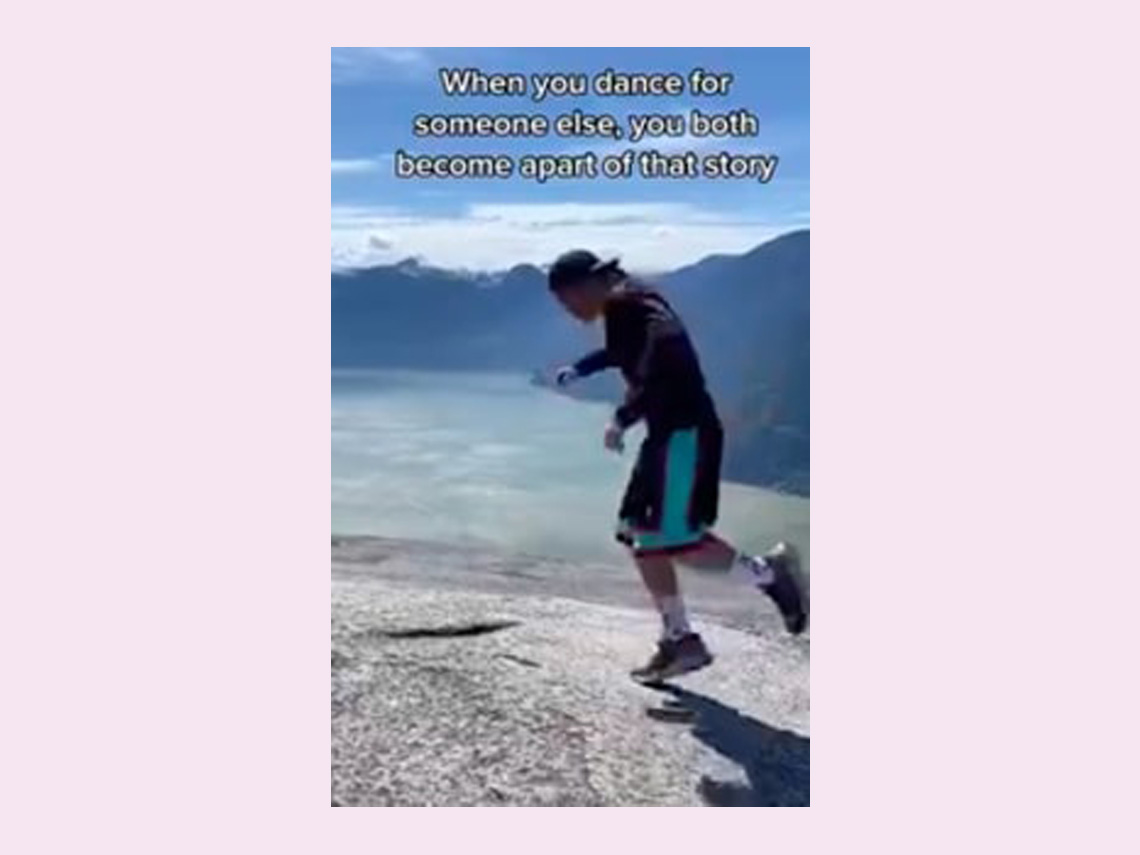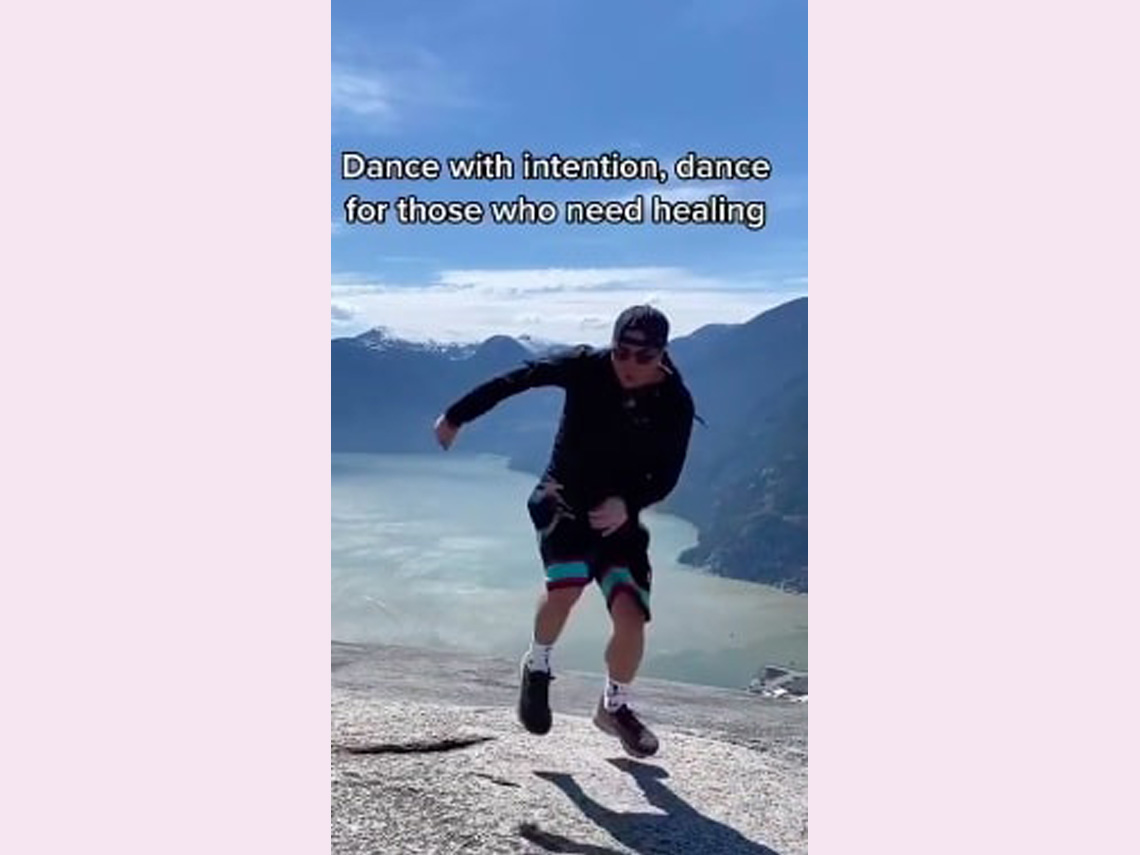Minds On
Today’s vocabulary
Press the following tabs to access today’s vocabulary.
Let’s get started!

Consider where dance exists in the media. Brainstorm examples of where dance may exist in various types of media, such as television shows, movies, music videos, in the news, on social media, or in print media.
Portfolio
Portfolio
Use the following graphic organizer to record your ideas.
Complete the Dance in the Media Chart in your notebook or using the following fillable and printable document. If you would like, you can use speech-to-text or audio recording tools to record your thoughts. Consider adding your work to your dance portfolio.
| Dance in the media | Dance in my life | ||
|---|---|---|---|
| Television shows: | Examples: | Dance in school: | Examples: |
| Movies: | Examples: | Dance in my home: | Examples: |
| Music videos: | Examples: | Dance in my community (cultural celebrations, weddings, holidays, etc.): | Examples: |
| In the news: | Examples: | Live dance shows: | Examples: |
| Social media: | Examples: | Extra-curricular dance: | Examples: |
| Print media (magazines, newspaper, etc.): | Examples: | Other: | Examples: |
Press the ‘Activity’ button to access Dance in the Media Chart.
Action
Get ready, get set…
Task 1: Exploring dance in the media

Dance is very important to cultures all over the world. In First Nations, Métis, and Inuit cultures, dance is used for celebration, ceremony, and entertainment. However, under the laws of the Indian Act, Indigenous dances were banned from being practised in an effort to assimilate Indigenous peoples into mainstream, European society. For decades, Indigenous peoples, specifically First Nations individuals, were not allowed to wear their regalia, perform using traditional instruments, or gather in groups to celebrate, mourn, heal, or have fun together. Despite these policies, Indigenous peoples resisted and continue to practise and perform their dances today across Turtle Island.
Dance has deep meanings within Indigenous communities. Each dance carries specific teachings and histories with it. The Hoop dance was historically a healing dance meant to help those who were sick in the community. The dancer tells a story of the never-ending circle of life with their movements. Today, the dance is performed to celebrate and remind people of their teachings and to inspire them to have pride in their identities. Each dancer has unique moves and regalia based on the nation and community they come from. In some families, Hoop Dancing is passed down from generation to generation.
However, because of the complex history Indigenous peoples endured in Canada, many did not learn these traditions from their parents, grandparents, or community members. In addition, for generations, non-Indigenous Canadians were not educated about this history either. First Nations, Inuit, and Métis peoples have taken to social media to not only teach other Indigenous peoples their teachings and traditions, but also to raise awareness among Canadians so that they can develop a better understanding of how rich, vibrant, and unique Indigenous cultures and peoples are.
Consider the following example of how Indigenous dancer, James Jones (aka Notorious Cree), uses Instagram as a platform to share his culture and identity through dance.
James Jones (aka Notorious Cree) is an Indigenous Hoop dancer who has performed all over the world. He is considered one of the top 5 Hoop dancers in the world! His performances include the 2010 Vancouver Olympics, the 2014 Juno Awards, and the 2015 Coachella Music Festival. James also has a degree in social work and offers workshops for youth that address the issues faced by Indigenous communities.
DescriptionAn Indigenous hoop dancer shares their culture and identity through dance. Throughout the images, the dancer explains the connection between dance, storytelling, and healing.
Image 1: "Dance is a form of healing."
Image 2: "It's also a way to tell stories."
Image 3: "When you dance for someone else, you both become a part of that story."
Image 4: Dance with intention, dance for those who need healing."
- In what ways is James Jones leveraging social media to share his message through dance?
- In what ways might he be described as a role model for others?
- In what ways is he using dance to share his identity and increase awareness and understanding of Indigenous cultures and practices in contemporary society?
Record your ideas using a method of your choice.
Go!
Task 2: The influence of dance in the media
The depiction of dance in the media can influence people in a variety of ways. Consider how the media’s depiction of dance might influence the following:
- a person’s sense of body
- a person’s sense of identity
- a person by providing role models
- a person by promoting a particular lifestyle or value
Respond to one or more of these prompts, explaining how you think the depiction of dance in the media might influence a person. You may choose to respond in writing, through video, an audio recording, or another method of your choice.
Consolidation
Putting it all together
Task 1: Where does dance exist in your life?

Think of where you encounter dance in your own life. Revisit the graphic organizer from the Minds On section and add examples of where dance exists in your own life. Only fill in the examples that apply to you using the right column.
Portfolio
Portfolio
Complete the Dance in the Media Chart in your notebook or using the following fillable and printable document. If you would like, you can use speech-to-text or audio recording tools to record your thoughts. Consider adding your work to your dance portfolio.
| Dance in the media | Dance in my life | ||
|---|---|---|---|
| Television shows: | Examples: | Dance in school: | Examples: |
| Movies: | Examples: | Dance in my home: | Examples: |
| Music videos: | Examples: | Dance in my community (cultural celebrations, weddings, holidays, etc.): | Examples: |
| In the news: | Examples: | Live dance shows: | Examples: |
| Social media: | Examples: | Extra-curricular dance: | Examples: |
| Print media (magazines, newspaper, etc.): | Examples: | Other: | Examples: |
Press the ‘Activity’ button to access Dance in the Media Chart.
Task 2: Think about what you have learned
Portfolio
Review your learning
Consider your answers from the previous graphic organizer.
- What do you notice about the type of dance media that you consume?
- Do you prefer one source of media over another?
- Are there other types of media that you consume that are not listed here?
- How closely do the depictions of dance you experience in the media mirror dance that exists in your everyday life?
- Do you think the media depictions of dance are accurate? Explain your thinking.
- Are there types of dances that you do not regularly notice depicted in the media? Why?
Respond using a method of your choice.
Reflection
As you read the following descriptions, select the one that best describes your current understanding of the learning in this activity. Press the corresponding button once you have made your choice.
I feel…
Now, expand on your ideas by recording your thoughts using a voice recorder, speech-to-text, or writing tool.
When you review your notes on this learning activity later, reflect on whether you would select a different description based on your further review of the material in this learning activity.



